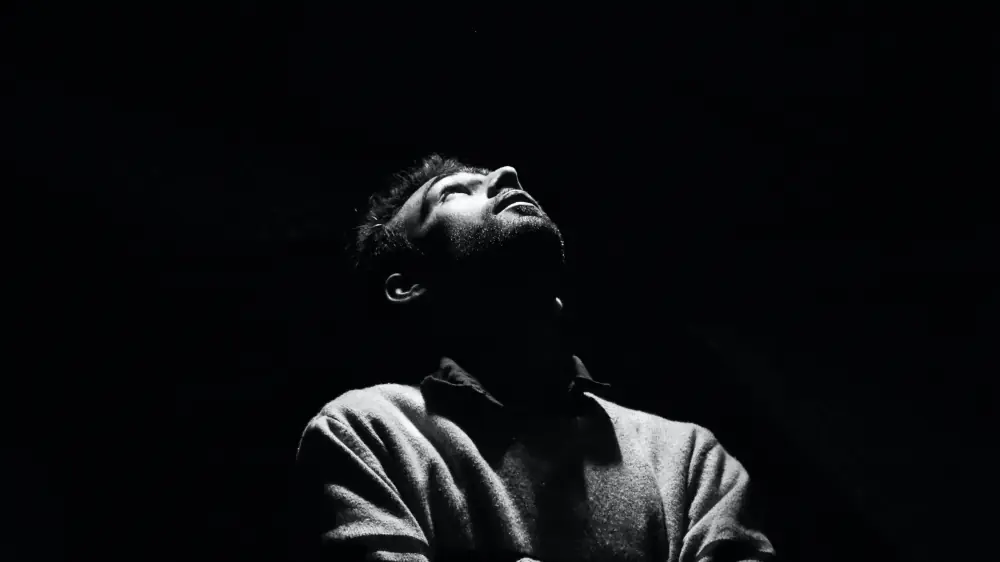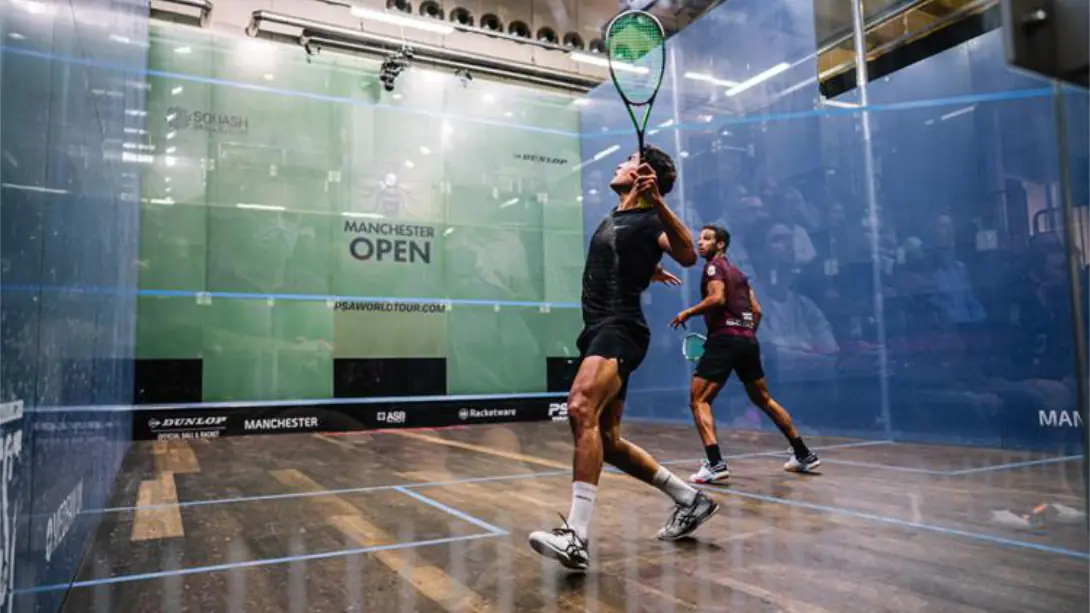01 November 2022 / 3-Min Read / Translate
This is the first in a monthly series of articles in collaboration With Cross Court Analytics (more about them at the bottom of this article). I’ll be using data supplied by them and comparing it to the average club player based on my coaching experience.
If after reading this article you feel you are closer to the pros, then great. If not, then perhaps it’s time to make some tactical changes to your game.

Is it a bird, or a plane? No, it's a lob.
Do you know how high a front wall is on a squash court? It’s 4.75 metres. That’s pretty high. Have you ever hit a shot out above the front wall out line? Probably not, nor should you, but if we were to see a contact heat map of shots played in an average club match, I bet few would be more than halfway between the service line and the out line.
It’s worth remembering that when playing a lob from the front, the ball doesn’t need to be much higher than the service line anyway. More on that below. But playing the ball higher FROM the back also has benefits. Besides the obvious one of giving yourself more time, it can also break the rhythm of your opponent, as well as tiring them out if they had to make contact with the ball above shoulder height.
So how do you compare with professional squash players? Let’s find out.
Use Of Height: The pros use height about once every 10 shots (men: 9%, women: 11%). This includes using height from anywhere on court (i.e. lobs from the front, as well as lifted shots from the back). But there is quite a lot of variation from pro to pro, as you’d expect: Coll uses height on 15% of shots; Ibrahim, for instance, just on 5% of shots. Linked to how often he takes the ball short, Momen’s opponents use height against him on 14% of shots (1 in 7 shots).
Cross Court Analytics
So, once every 10 shots, more or less. I've seen whole club matches where nothing higher than the service line was played. I'm sure you are not that bad, but honestly, if I asked you if you use height enough, would you be able to honestly say yes? I doubt it. As you can see, not everybody plays lots of higher shots and if that works for you then great, but does it work for you, or are you just neglecting it.
The last point from the data is the most interesting , and that's the idea that against some players, in this case Momen, using height against them might be a great way of limiting their options. I used to avoid playing high shots against players who used to play badminton, but over the years I have found that their high shots are as bad and as good as any other type of player. The key here is to try high shots against all sorts of players and see how they respond.
Remember, most players, pros included, wait on the T area with their racket quite low. When the ball is played high across the court, even though it's not moving very fast, players often don't choose to volley, meaning they leave it until it bounces. If you can make that shot almost like a lob serve, you can really cause them problems.
One final point about general height. Straight drives and crosscourt drives should never be seen in isolation. if you have a great straight drive but terrible crosscourt, the effectiveness of your straight shot is severely reduced. By having a good high crosscourt that causes your opponent minor problems, you force them to stay more central on the court making your straight drives more effective.

Making contact with the ball above your shoulder is tiring.
I’ve written about lobs from the front before. Too often playing defensive squash is seen as a weakness. Club players play less percentage shots than pros, meaning they will go for winners even when they are not in the best position to do that. That is sometimes caused by a lack of fitness, which leads to wanting the rally to finish early.
When you begin to realise that a good lob from the front is sometimes as attacking as a drop shot, you mindset changes. By lobbing you take away the advantage your opponent was trying to gain and turning the tables on them. That said, you actually have to practice those lobs because you are making contact with the ball much lower than other types of shots, and that requires a strong forearm and firm wrist to get under the ball.
Anyway, let’s see the data….
From The Front: In the men’s game, players lob on 22% of shots from the front. (again, some fluctuation: e.g. when taken into the front corners, Momen’s opponents lob 26% of time; Coll lobs 29% of shots from the front.). In the women’s game, players lob on 19% of shots from the front.
Cross Court Analytics
WOW, what a difference. That means that 1 in 5 shots played from the front are lobs. One in 5! I guesstimate that at club level, the figure is more like 1 in 20. Now, that could be because the pros’ boasts are so good that anything else is risky, whereas boasts at club level clearly aren’t as good, but it’s all relative. A “good boast” is a “good boast” wherever and whenever its hit.
Again, the point about Momen’s opponents should be highlighted. If your opponent is very effective at the front of the court with tricky shots, stop hitting it there. yes, I know that sounds patronising, but often we lose all common sense in the heat of a squash battle and play like a headless chicken.
The simple training solution is to play lobs from all boasts in future training games – at least the first proper game of a training session. That way you give yourself practice, but also force your opponent to have to cover them, making your drops more effective.
The key here is to tailor your tactics to cause the most problems for your opponent. That must also be balance with your strengths and weaknesses. if you can’t use the height of the court well, you are effectively giving you opponent a free advantage. Start today or the next time you play, by becoming more aware of the front wall and how well you use.
Cross Court Analytics is a squash data services provider. In their words: “You send us the footage of your match and we compile, analyse and return the data straight to your inbox“. I’ve been in contact with them since just after their creation and found them very helpful. They have worked with the PSA, international teams and various coaches and players around the world. Their service is available to you for a very reasonable fee. If you are interested in learning more about them or using their services, visit their website.
This monthly series of articles uses data provided by them. I am not connected with Cross Court Analytics in ANY way, and the links above are NOT affiliated links.